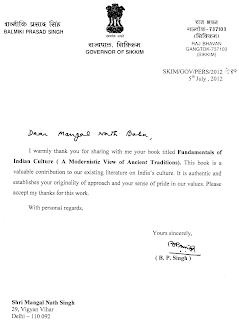ANTEYSHTHI: THE HINDU FUNERAL RITES
ANTYESHTI – The Funeral Rites The last sacrament of the Hindus is Antyeshti or the funeral rites. Like the phenomenon of death, rites and customs connected with the disposal of the dead body are also universal. Man consciously realizes that death is an inevitable end of every human being. As such it is but natural that every actual occurrence of death should provide an occasion for the living to react to this fact by appropriate behavior. After death, a sentiment of dread is created in the survivors. There is a belief that even the deceased continues to have some kind of interest in the family property and relatives whom he is unwilling to quit. It is also believed that although after death the man is alienated from the survivors, he may cause some harm to them. In the formal farewell given to him he is requested to depart and is provided with all the articles considered necessary for a traveler, so that he could complete his journey comfortably to the next world. As the P...

